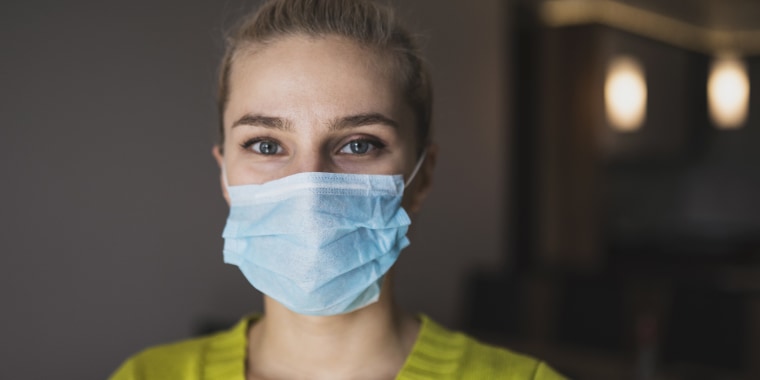The world doesn’t seem as friendly when it’s filled with people wearing masks.
We gaze at strangers’ faces to gauge their intentions, so when the nose, mouth and chin disappear behind a covering, many clues vanish with them.
If a person is friendly, will you recognize it? If you smile, will he or she know it?
The answer is yes — it’s still worth it to smile while wearing a mask, said body language expert Janine Driver, founder and president of the Body Language Institute in Washington, D.C.
“We’re lucky a lot of information shows up in the eyes and the eyebrows,” Driver, who was trained as a lie detection expert and teaches online courses about the techniques, told TODAY.
“With true happiness, we see it with the wrinkles on the side of our eyes.”
Psychologist Paul Ekman, who studies facial expressions, described a “true enjoyment smile” as showing up in the crow’s feet or laugh lines area of the face, with the eyes narrowing and crinkling. A genuine smile — also known as the Duchenne smile — engages the orbicularis oculi muscle around the eye; a fake smile does not.
When a baby smiles, you still know it even when his or her mouth is covered by a pacifier, Driver pointed out. It’s all in the eyes.
People can also “hear” when someone smiles because it changes in the shape of the mouth, causing the voice to become brighter, Ursula Hess, a facial expression and emotion researcher at Humboldt University of Berlin in Germany, told Scientific American.
People should “100% smile” when they’re wearing a face covering, plus make eye contact to show they’re not a threat, Driver advised.
“Remember that you’re wearing a mask, which is intimidating,” Driver noted. She wears a cloth mask with a graphic of a closed zipper on it, which she finds funny, but she knows strangers who run into her in a garage or elevator might not know what to make of it. So she’s deliberately friendly.
“Just the power of giving someone eye contact in this new crazy world is going to change everything,” she said.
Here are more tips for improving social interaction while wearing a mask:
Take off your sunglasses:
Wearing a mask and sunglasses while talking with someone is a deal breaker: “You are blocking how you are feeling from the world. When we can’t see your eyes, we can’t interpret your emotions, and if we can’t interpret your emotions, we are left with uncertainty and this uncertainty leads to us not trusting you and us feeling uncomfortable around you,” Driver said.
Keep your three “power zones” open:
They include the throat, belly button and groin area. Blocking them by crossing your arms or holding your throat blocks rapport, Driver noted. Keeping them open increases your approachability and likability.
Be mindful of your head tilt:
Tilting your head to the side while talking or listening is seen as compassionate; keeping it straight on your shoulders is saying “I command attention,” Driver noted. If someone is standing too close to you in line, for example, and you want to ask them to keep their distance, doing so with a head tilt may be more effective.
Watch the eyes:
Relaxed eyes mean a person is feeling comfortable. When they begin to narrow, as if someone is threading a needle, the person may be stressed, upset or feeling threatened, Driver said.
Pupils dilate when we’re feeling comfortable; they constrict when people see something they don’t like.
If you can see the white of the eyes “north, south, east and west” of the iris, that person is afraid, she noted.
Observe the eyebrows:
You can tell sadness when a person’s inner eyebrows are pulled together and up, one of the hardest muscles to manipulate, Driver said. The brows come down in anger and up in surprise.
Bottom line: Our face is huge when it comes to showing emotions, even when a large part of it is covered up. Keep smiling behind the mask.


